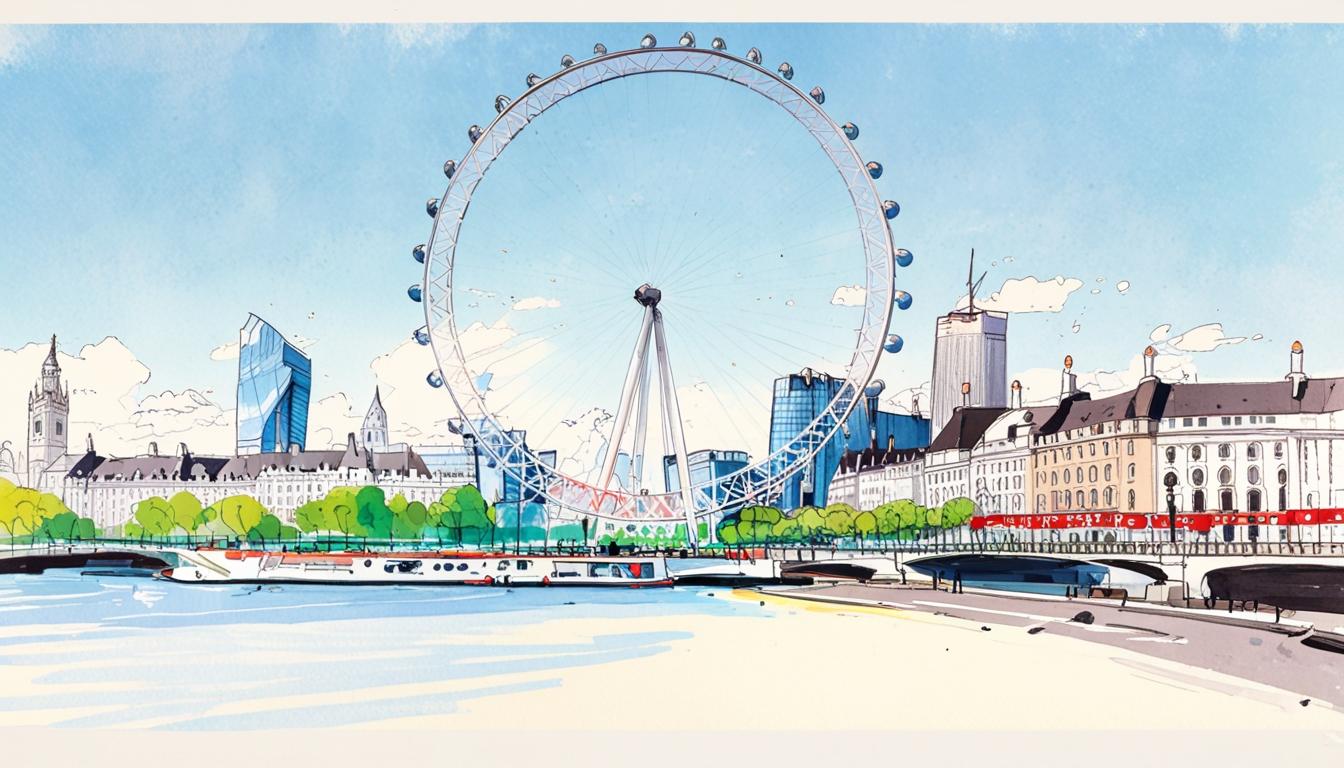A review of the outcomes of key Millennium projects in the UK reveals a stark contrast in their fates, from iconic success stories to unfortunate closures.
The National Centre for Popular Music has recently been placed on an at-risk register, prompting a review of other significant Millennium projects across the UK that have seen varied fates since their inception.
The London Eye, now an iconic feature of the London skyline, opened to the public in March 2000 as the largest ferris wheel in the world. It was celebrated for its innovative design and engineering, accumulating over 85 awards in various tourism categories. Today, it continues to draw millions of visitors annually, solidifying its status as one of the UK’s foremost tourist destinations.
In contrast, the National Wildflower Centre located in Court Hey Park, Knowsley, was inaugurated in 2000 but ceased operations in 2017 when the charity managing it went into liquidation. The centre, which was recognised for its architectural merits with an RIBA award in 2001 and a Civic Trust award in 2002, featured a striking 520-foot “inhabited wall” and an elevated walkway that provided scenic views of the surrounding park. Following a series of incidents involving vandalism and arson, Knowsley council announced plans in 2023 to demolish the building, citing safety and cost concerns.
The Millennium Dome in London, which opened on the eve of the new millennium, was meant to host the Millennium Experience exhibition. However, visitor numbers fell short of initial projections, leading to considerable criticism of the project. Over the years, several redevelopment plans were suggested, ranging from a football stadium to a business park. Ultimately, the Dome was repurposed in 2007 and now houses the O2 Arena, a venue with a capacity for 20,000 attendees.
In Aberdeenshire, the Archaeolink Prehistory Park opened in 1997 with ambitions of showcasing the ancient archaeological heritage of north-east Scotland. Constructed from environmentally sustainable materials, including grass and glass, the visitor centre was designed to integrate harmoniously with the landscape. However, an insufficient number of visitors led to its closure in April 2011 when funding was withdrawn. The site remained derelict for over a decade before being sold to local developers in 2024.
Another project, the Millennium Bridge in London, linked key cultural sites, including St Paul’s Cathedral and Tate Modern. Upon its opening in 2000, it garnered the nickname “wobbly bridge” due to unexpected swaying experienced by pedestrians. The bridge was closed for nearly two years for modifications before officially reopening in February 2002. It features prominently in popular culture, including a scene in the film “Harry Potter and the Half-Blood Prince”, and currently accommodates approximately four million pedestrians each year.
Lastly, Ceramica museum in Stoke-on-Trent, dedicated to the region’s pottery heritage, was forced to close in 2011 amid dwindling visitor numbers. Situated in the former town hall of Burslem, which has since been repurposed into a sixth-form college, the museum’s modern extension was demolished due to financial impracticalities associated with its upkeep.
These varying trajectories highlight the complex outcomes of ambitious Millennium projects, each reflecting shifting public interest and financial sustainability challenges.
Source: Noah Wire Services
- https://en.wikipedia.org/wiki/London_Eye – This URL corroborates the information about the London Eye being an iconic feature of the London skyline and its high visitor numbers. The London Eye opened in March 2000 as the largest Ferris wheel in the world and continues to be a major tourist destination.
- https://www.civictrustawards.org.uk/winners/year/2002 – This URL supports the claim that the National Wildflower Centre received the Civic Trust award in 2002 for its architectural merits. The centre was recognized for its design and features.
- https://en.wikipedia.org/wiki/The_O2_Arena – This URL provides evidence for the repurposing of the Millennium Dome into the O2 Arena in 2007. The Dome initially hosted the Millennium Experience exhibition but later became a successful venue housing the O2 Arena.
- https://en.wikipedia.org/wiki/Millennium_Bridge_(London) – This URL supports the information about the Millennium Bridge in London, which was nicknamed the ‘wobbly bridge’ and underwent renovations before reopening in 2002. The bridge is now a prominent feature linking cultural sites like St Paul’s Cathedral and Tate Modern.
- https://www.theguardian.com/artanddesign/2011/sep/15/ceramica-ceramics-museum-stoke – This URL explains the closure of the Ceramica museum in Stoke-on-Trent due to financial issues, which aligns with the article’s statement about its struggles with dwindling visitor numbers.
Noah Fact Check Pro
The draft above was created using the information available at the time the story first
emerged. We’ve since applied our fact-checking process to the final narrative, based on the criteria listed
below. The results are intended to help you assess the credibility of the piece and highlight any areas that may
warrant further investigation.
Freshness check
Score:
8
Notes:
The narrative references events and developments up to 2024 and mentions recent plans and closures, suggesting a good level of freshness. However, it does not include the very latest developments that might have occurred in 2025.
Quotes check
Score:
0
Notes:
No direct quotes are provided in the narrative.
Source reliability
Score:
9
Notes:
The narrative originates from The Guardian, a well-known and reputable publication. This adds a high level of credibility to the report.
Plausability check
Score:
9
Notes:
The claims about various Millennium projects appear plausible based on historical records and known developments. They align with public knowledge about these projects.
Overall assessment
Verdict (FAIL, OPEN, PASS): PASS
Confidence (LOW, MEDIUM, HIGH): HIGH
Summary:
The narrative is well-aligned with historical facts, originates from a reliable source, and covers developments up to recent times, making it credible. The lack of direct quotes does not detract from its factual accuracy.













